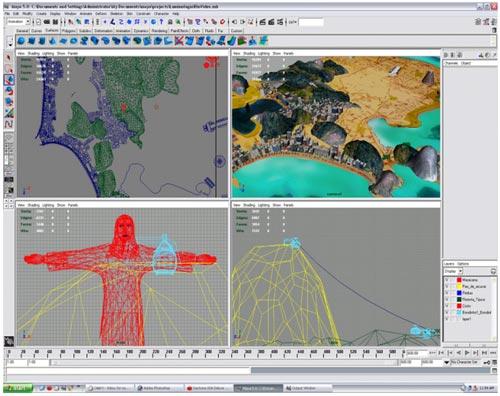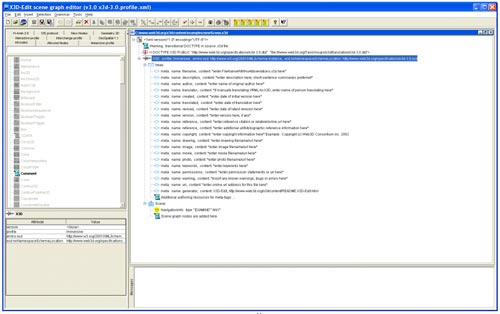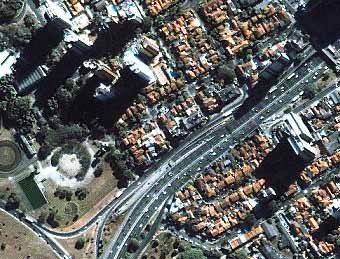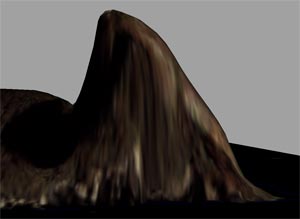Developing
The model was created with Alias|wavefront Maya. In the
snapshot of the modeling window, it is possible to see the Corcovado
Christ and Sugar loaf. The polygons were used to model the environment,
but sometime resources like subdivision polygons are very useful,
enabling a bigger flexibility to model. The model is then saved
in VRML and then converted to X3D. There are many options to
save a model in VRML inside Maya.

Maya tool editing Rio de Janeiro |
The difference between World and Hierarch is important, Hierarch
saves the model, using the same Groups and Transforms from Maya,
and then it is possible to control the files easily. Another
important feature regards the animation. You have to turn it
on when you want to save the animation in the file. But probably
you need to revamp the file, because Maya is not accurate in
this conversion.
After that, the file is read by an import tool in X3D-Edit an
the converted to X3D, in this step the x3d files have an absolute
path, that makes difficult to control the textures, then they
are fixed inside X3D-Edit. Finally the file was saved in x3d
format, using the xml encoding.

X3D-Edit |
Also was created an avatar for the use with the real hang-glider
because the user is wearing a HMD and cannot see the real one.
We changed the size constraint from the last version of the
ride. In the first version we decided to increase the size of
the objects to make them more visible and creates a more fun
travel in a short period. In the new version we are using a
satellite image in the terrain, then there are rich details.
The satellite image acquired has 1 meter per pixel resolution,
but our software does not support this kind of resolution. Then
we just divided the terrain in 4 objects, an we applied four
4096x4096 (2048x2048 in the notebook version) images in each
object. Some textures were create, like the cable car and some
monuments, and other textures were get from the real place,
like the Copacabana Palace Hotel, among others

Satellite picture |
Because the satellite images are very perpendicular some textures,
like mountains, have a big deformation. To solve this is important
some work with local pictures. We are working now to incorporate
this resource.

Sugar Loaf |
The sound simulation has the background music “Aquarela
do Brasil”, and some points in the environment have
special sounds, like in Maracanã, the biggest soccer
stadium worldwide, and Sambódromo, the carnival parade
avenue. These sounds are just wav and mp3 sound files that
are easily read for the environment.
The tool used to visualize is Jinx. Jinx is a tool developed
internally at the University. It is a 3D browser and supports
X3D files. Jinx was projected to support simulations using commodity
cluster technologies. This way each computer is responsible
for some specific tasks. It supports stereoscopic graphics and
3D sound, besides other possible expansions. The cluster is
capable to drive until 6 stereo screens and audio channels.
In our solution we have also a 64 bit computer to calculate
the simulations, like collision detection.
|